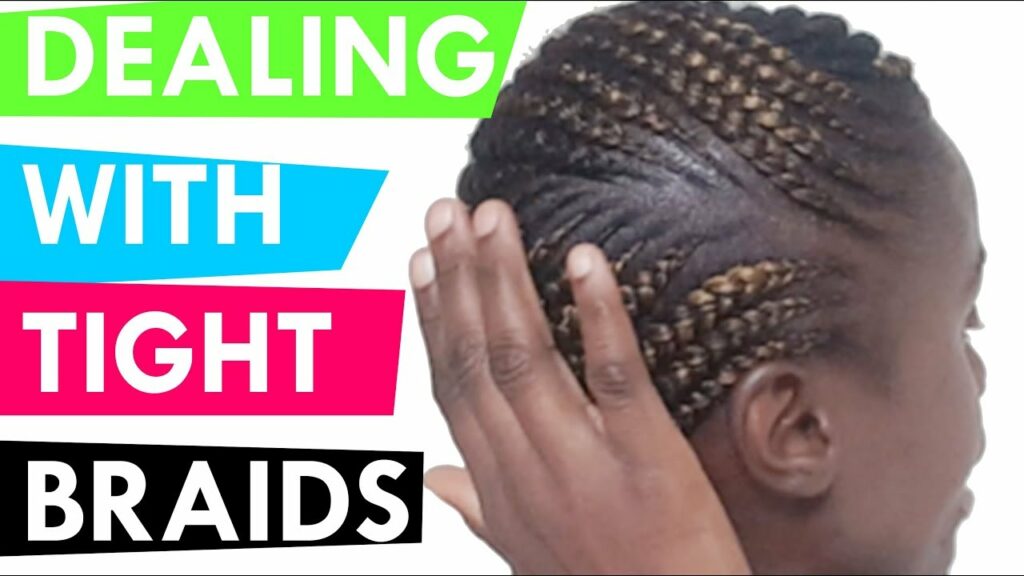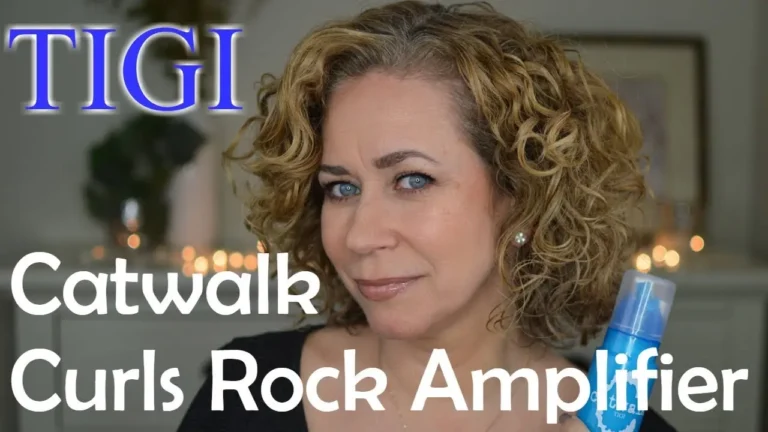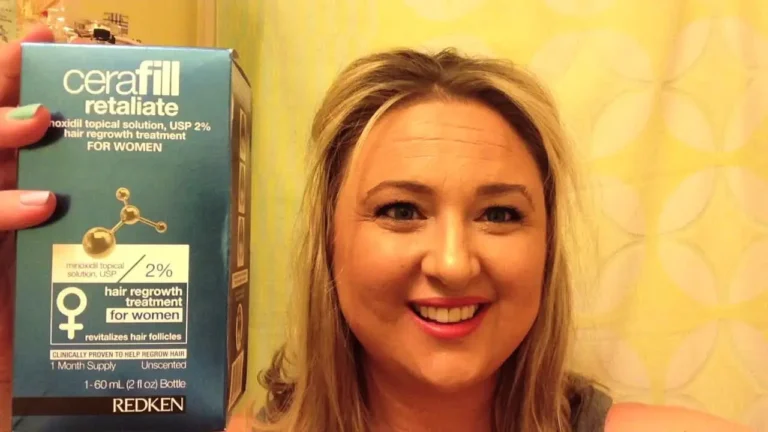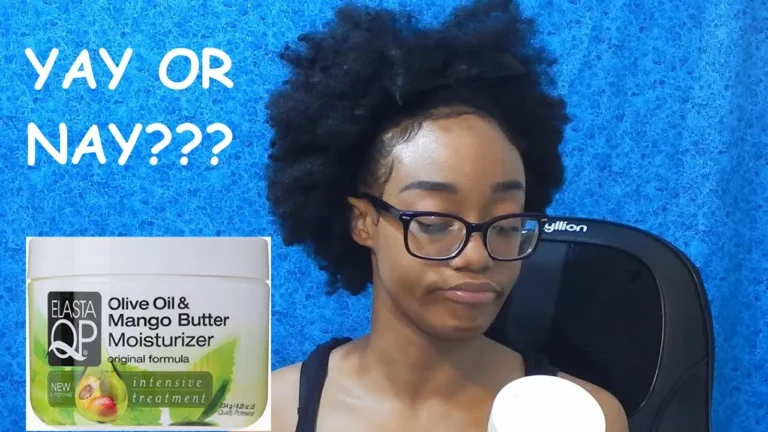
Tea Tree Oil The Ultimate Guide
Tea tree oil is a great natural choice for tight braids because it won’t cause damage or dryness. It can be used for a number of hair and beauty problems and can help to reduce the effects of hair loss and promote hair growth. Tea tree oil is becoming more and more popular as a natural hair care product. It can be used alone or paired with a gentle shampoo, like HAIRFINITY Gentle Cleanse Shampoo to gently loosen up those tight braids and also, moisturize the hair and scalp.
Braids are an excellent protective style. However, there can be a downside: too much tension. There are two signs that your hair has been braided too tightly: One, you’re in pain. A lot of pain… for days. Or two, you notice little bumps around your hairline that weren’t there before. Oh, and you’re in pain.
Beauty shouldn’t hurt. If your head hurts, it’s because your hair is braided too tightly, or you have too much extension hair added. In either situation, this doesn’t bode well for the future of your hairline. Some braiders may tell you to take an aspirin and the pain should be gone by morning, but any pain is an indicator that something is wrong. Bottom line: if you feel any pain, there’s room for concern.
A braider may braid tightly so that the style lasts as long as possible, which is what most of us want, especially if we’ve saved up our hard-earned dollars to get the style. But tight tension is not good for your hair, hairline, and scalp. Medium tension is best for fashioning braids; they may not last as long as tight braids, but your hairline will last much longer.
If you’re a victim of headache-inducing braids, there are steps you can take to alleviate the pain and potential damage to your edges. Ahead, we talk to haircare experts to get advice on how to relieve the pain and tension from tight braids.
Tea tree oil for tight braids?
Use tea tree oils for a scalp massage. Rub gently into the area where you feel the most tension or stiffness. Apply with your fingertips and massage for a few minutes. Lavender and tea tree oil have properties that will help in soothing inflammation. Alternatively, you can mix 5–6 drops of tea tree oil into a light weight moisturizer and apply it to your hair. Don’t apply a-lot of the product until you know how your hair responds to the tea tree oil.
Tips, tricks and facts for using tea tree oil for tight braids
- Tea tree oil can be used on any type of hair, no matter what style, texture or length
- Tea tree oil on its own is quite strong, so be sure to dissolve the oil into another carrier oil (like coconut, jojoba or olive) before applying to your hair or scalp to loosen up the tight braids. When applied in its undiluted form, tea tree oil can actually be very irritating and can cause itching and dryness. Stop using tea tree oil if you notice redness, rash, or irritation.
- There are many tea tree oil based hair products like shampoos, conditioners, hair oils and dandruff shampoos on the market now to choose from. Try more than one type to see what works best for you and your individual needs.
- Tea tree oil can cause allergies in some people, so try doing a patch test first with your diluted solution before applying it to your scalp or hair.
- Try using a mixture of carrier oil with tea tree oil on dry hair. This may help to reduce or eliminate stubborn dandruff from the scalp and also loosen up tight braids.
- Make sure that you are only using a few drops of tea tree oil with your carrier oil, or if using with a shampoo/conditioner, adding only 10 drops for every 8 ounces of shampoo/conditioner. If too much is used, it can have the opposite effect and cause hair to become extremely brittle and weak.
- Tea tree oil is not only a great solution to loosen hair but can also help to treat a number of skin infections and respiratory problems.
How to use tea tree oil for hair
Using tea tree oil for hair is an easy and effective way to maintain healthy hair and a healthy scalp. You can apply tea tree oil for hair in many ways, by simply massaging tea tree oil onto your scalp or adding a few drops to your favorite shampoo.
For daily cleansing:
- Add a few drops of tea tree oil to your favorite shampoo to help enhance the shampoo’s therapeutic properties.
- Apply the mixture to the scalp and gently massage for a few minutes, then rinse thoroughly.
- Massage the mixture into the scalp to help enhance the medicinal properties of the tea tree oil.
- For hair growth:
- tea tree oil helps to unclog hair follicles and nourish your roots.
- To use tea tree oil as a hair growth treatment, mix a few drops of tea tree oil with any carrier oil (coconut, jojoba, almond).
- Mix it well and massage the mixture onto the scalp.
- Rinse thoroughly. The mixture should feel refreshing and will have a tingling effect on your scalp.
- Tea tree oil can also be mixed with olive oil to add softness, smoothness and to add a protective layer that will be resistant to toxins and will help to promote hair growth.
- To prepare, warm olive oil for a few seconds and mix in 3-5 drops of tea tree oil.
- Apply this mixture to your scalp and hair at least once a day for 3 weeks in order to see amazing results.
For dry scalp:
- Tea tree oil is amazing for your dry scalp as it moisturizes and nourishes your scalp and hair. It helps to clear the blockages in the pores and helps to prevent dryness and itching.
- To use tea tree oil for your dry scalp, take a few drops of tea tree oil and mix it well with jojoba oil.
- Massage the mixture gently onto your scalp for 10-15 minutes.
- Rinse out thoroughly and wash your hair as normal.
- Repeat this process regularly to relieve any symptoms associated with dry scalp.
- Tea tree oil can also be added to your regular conditioner to help relieve the itchiness caused by dry scalp. Simply shampoo your hair as normal, then add a few drops of tea tree oil to your regular conditioner. Mix it well and apply to your scalp and hair. Leave it on for a few minutes, then rinse off completely.
For dandruff:
- Tea tree oil contains antifungal and antibacterial properties that fight against the fungus that causes dandruff, and does so without drying your scalp. It works as a natural conditioner to your hair and eliminates any agents that are causing your skin to flake.
- Simply add tea tree oil to your existing shampoo, about 10 drops for every 8 ounces of shampoo in the bottle.
- Shampoo your hair thoroughly and allow the tea tree oil mixture to sit on your hair for at least 3-5 minutes. This will let the oil work itself into the hair and begin to treat the scalp.
- After the oil has set, rinse the shampoo from your hair thoroughly.
Hot oil treatment:
- Tea tree oil can be added to any of your favorite hot oil treatments to add moisture to your scalp and help to treat dryness/itchiness.
- Choose any carrier oil such as jojoba, olive, sesame, castor, almond or coconut oil.
- Add 1-2 drops of tea tree oil to ½ cup of oil (use less if your hair is naturally more prone to oiliness, more if it is more prone to dryness).
- Warm your oil mixture by heating plain water on the stove. Wait until the water is just about to boil and remove the pot from the stove.
- Put the oil mixture in a separate container and place it in the warm water until the oil warms up. Test the oil on your wrist first to check the temperature, making sure it is not too hot.
- Section your hair into four sections, to make distribution easier and more even.
- Using an applicator bottle or your hands, apply the oil to your hair, distributing evenly.
- Carefully massage the mixture into your scalp and coat through to your ends.
- Cover your hair with a plastic shower cap and let the oil treatment sit on your hair for at least 30 minutes.
- Shampoo and condition as normal.
Hair mask:
Tea tree oil can be used in a hair mask to help eliminate dandruff, dryness and itchy skin.
Begin by choosing a base for your mask – one cup of plain yogurt or one whole avocado mashed up. Both are thick enough to act as a paste and will also moisturize due to their abundance of healthy fats.
Add 10 drops of argan oil, 2 tablespoons of honey (both will aid in hydration and act as a glue).
Add some drops of tea tree oil and stir the mixture until smooth and creamy.
Using gloves, apply the mixture directly to your scalp, press in and massage gently using your fingertips.
Leave on for 10 minutes, then make sure to rinse out thoroughly.
Does tea tree oil make hair grow?
For hair growth: tea tree oil helps to unclog hair follicles and nourish your roots. To use tea tree oil as a hair growth treatment, mix a few drops of tea tree oil with any carrier oil (coconut, jojoba, almond). Mix it well and massage the mixture onto the scalp. Rinse thoroughly.
Does tea tree oil thicken hair?
Tea Tree Oil for Longer, ThickerHair While tea tree oil doesn’t necessary speed up hair growth directly, it can actually encourage hair growth by helping to unclog hair follicles and nourish the roots.
Can I leave tea tree oil in my hair overnight?
How Long Can You Leave Tea Tree Oil In YourHair? Tea tree oil, when used in small amounts and in combination with other oils, can be left in overnight as a deep conditioning treatment. However, when using it by itself as a scalp treatment, it’s better to wash it off within an hour to avoid possible irritation.
Conclusion
Tight box braids are definitely not normal. These ways should help in relieving pain, soothing your scalp, and loosen your braids.
However, if you are experiencing pain even after a few days and nothing works, consider removing your braids altogether. You will prevent hair loss, alopecia, and breakage. Removing braids is not something that you want after spending hours getting them, but we recommend that if the pain doesn’t go away. Give your hair some love after removing the braids. Soak it in the tea tree oil treatment that has anti-inflammatory properties and condition it well.
Please check out my other post about How long should i wait before texturizing my hair again







Comments are closed.